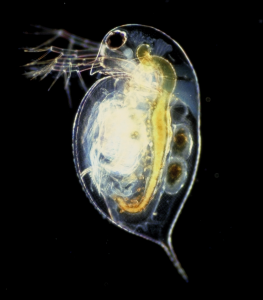39 Does Sex Lead to Fewer Mutations?
Mutations are a fact of life. All organisms possess DNA that is different from the DNA they inherited, and this altered DNA, or mutation, is the ultimate source of all genetic variation. Some have suggested that one of the benefits of sex is its ability to rid the body of harmful (or deleterious) mutations.
Sex and DNA repair
Mutations arise from random errors in DNA replication: by the insertion or deletion of mobile genetic elements, or through the effects of various mutagens (e.g., chemical compounds or radiation) that damage DNA. However, most of the damage that occurs to a cell’s DNA is repaired. The cell has numerous tools that it can use to fix the damage that can occur.
Mutagens such as radiation can cause single- and double-strand breaks in the double helix of DNA. If there is damage to only one DNA strand, the other strand can be used as a template for repair. More problematic is when both strands of DNA break; when this happens there is not a simple way to re-synthesize the lost DNA. In cells that are diploid (cells that have two copies of each chromosome), there is a complementary chromosome, or homologue, available–but in order to be useful, it must be close to the damaged DNA.
Chromosome pairs are close together in the first stage of meiosis, in which crossing over between the chromosomes occurs. In fact, many of the cellular tools used to repair double strand breaks in DNA are the same ones that facilitate crossing over (homologous recombination) during meiosis. So, if meiosis repairs damaged DNA, and meiosis is essential to sexual reproduction, perhaps sex exists because of the repair benefits of meiosis itself.
Sex and Ratchets
A ratchet works because it rotates in one direction, but not the other. Similarly, once a mutation occurs within a population, it is extremely unlikely to un-occur. Because mutations are relatively rare and occur randomly in an organism’s genome, there is very low probability that there will be a “back mutation” or a second mutation in the exact same spot to undo the first mutation. Thus, over time, a lineage will likely accumulate increasing numbers of mutations, some of them harmful. This idea is often called “Muller’s ratchet,” after Hermann Joseph Muller, who hypothesized it, and the simple machine, the ratchet (Figure 1).

According to Muller’s ratchet hypothesis for the existence of sex, sexual reproduction is better able to eliminate harmful mutations from the genome. Creating a variety of gametes and combining those gametes with another individual (who would presumably have a different collection of mutations) results in some of the offspring carrying more harmful mutations than others. Presumably, the individuals or gametes with fewer harmful mutations survive and reproduce more successfully. In this way, through sex, a lineage has an opportunity to shuffle its genetic material, and produce some offspring with fewer harmful mutations (and the most beneficial ones). Thus, the shuffling of material that occurs during sexual reproduction essentially rotates the ratchet backwards.
Evidence supporting Muller’s ratchet
A testable prediction associated with Muller’s ratchet is: Mutations accumulate more rapidly in asexually reproducing organisms than in sexual organisms. To investigate this hypothesis, scientists study organisms that occur in both sexual and asexual forms. One such animal is the microscopic water flea (Daphnia; Figure 2), which can be maintained in clonal or sexual lineages.

A comparison of strains of water fleas that reproduce asexually with those that occasionally have sex revealed that the asexual strains have more mutations. Specifically, the asexual water fleas have a higher proportion of substitution mutations that result in amino acid changes. This comparison supports the hypothesis that sexual reproduction reduces the accumulation of potentially harmful (or deleterious) mutations. Similar observations have been made in sexual and asexual lineages of freshwater snails.
This chapter is licensed under a Creative Commons Attribution-NonCommercial-ShareAlike 4.0 International License

